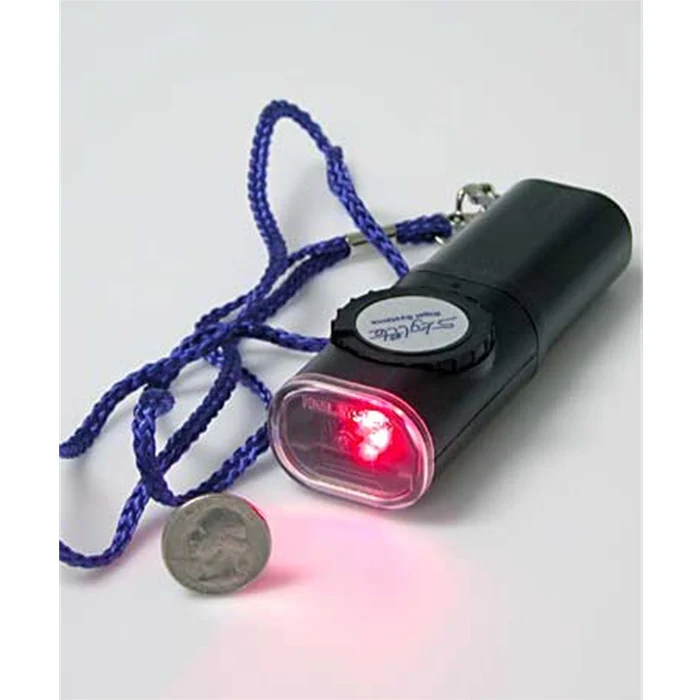
Rigel Skylite Water-Resistant Variable Brightness Two-Color LED Astronomer's Flashlight
Manufacturer Part #

Manufacturer Part #
The water-resistant Skylite variable brightness flashlight provides two different colors of light - blue-white to help you set up and take down your scope in the dark, and red to help you read star charts and operate your scope without affecting your dark-adapted vision. Each light color uses two LEDs (Light Emitting Diodes) to provide a wide range of brightness levels. The 5" long Skylite has a large continuously variable rotary brightness control knob that also functions as an on-off switch and LED color selector. The center detent position turns the light off. Rotating the control knob in one direction turns on the red LEDs and controls their brightness. Rotating the knob in the opposite direction from the center detent turns on the blue-white LEDs and controls their brightness.
When set for red light output and turned to maximum brightness, the light is bright enough to locate missing items in the grass and take down your telescope after an observing session at a star party without affecting the dark-adapted vision of neighboring astronomers. Maximum brightness will affect your dark-adapted vision if observed directly, so use this setting sparingly when you're observing. The Skylite is designed to turn on at its lowest level so you can't accidentally affect your dark-adapted vision by having too bright a level when switching on. Medium red brightness levels illuminate a star chart without affecting your dark-adapted vision. Turned nearly all the way down, the red light is just bright enough to let you read your watch, the focal length on an eyepiece, or the Wratten number on an eyepiece color filter.
When the blue-white light is chosen, you have a much wider brightness range to choose from. If aimed carelessly, even a medium setting of the blue-white light will ruin your dark-adapted vision and that of nearby observers. Accordingly, the blue-white option is only recommended when you are breaking down your scope after observing on your own, not when you're at a star party. The blue-white light is bright enough to illuminate the path from observing site to car, making it an excellent piece of safety equipment when observing on your own but a danger to the enjoyment of other astronomers.
The light is powered by a single 9-Volt transistor radio battery (supplied) that will last for dozens of hours (the exact lifetime depends on the brightness level used). When replacing the battery, an alkaline or lithium battery will give the longest life. An 18" long braided cord lanyard is supplied that lets you hang the light close at hand around your neck when it's not in use. The water-resistant body won't be affected by putting the light down in dew-soaked grass, snow, or a puddle in the darkness.
| Weight | 6 oz |
|---|---|
| Warranty | 5 years |
{"one"=>"Select 2 or 3 items to compare", "other"=>"{{ count }} of 3 items selected"}